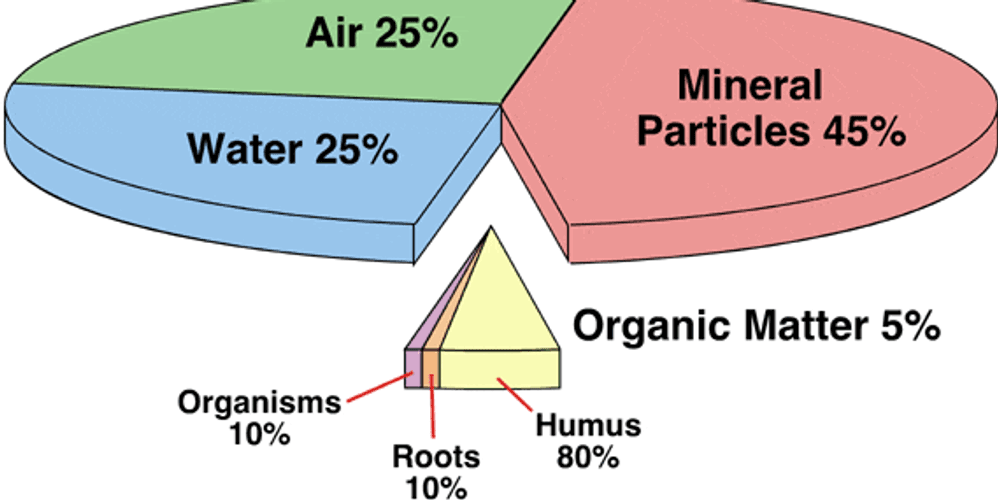
Soil Composition
Soil composition basics for ultimate plant vitality in your Growing Dome® Greenhouse
Soil composition is the most important, yet most misunderstood factor for many home growers. The health of your soil is crucial to the vitality of the plants you choose to grow in your greenhouse. But what is makes up soil composition? How does it differ from dirt? Below you will find the answers to these questions, as well as the components that build soil structure.
Soil Composition 101
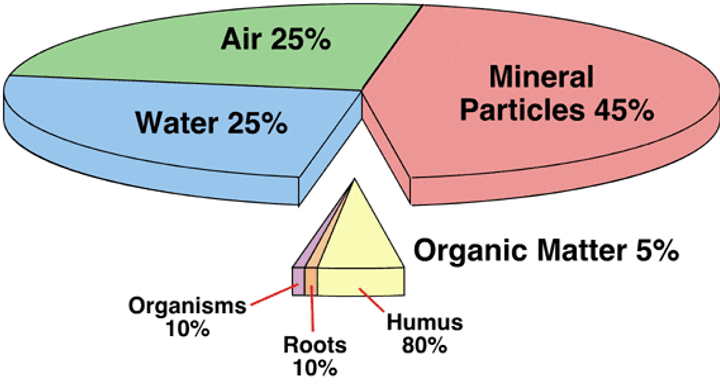
Soil is comprised of 50% air and water, and 50% Inorganic materials, minerals, and organic microorganisms, whereas dirt does not contain any organic or living matter.
Inorganic materials
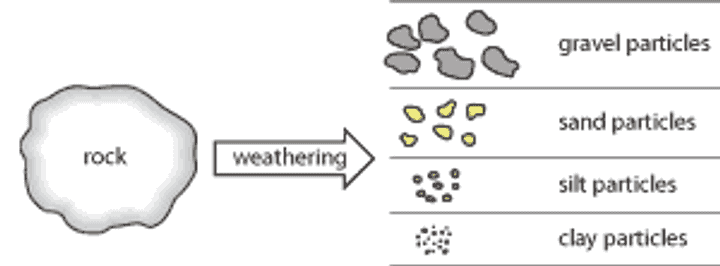
Inorganic materials are a piece of soil composition that indicate how the soil will act in your garden. These are the ingredients in your soil that help the roots have structure and grow. Some examples are sand, clay, and rock, which all form specific pore space depending on the ratio in your soil.
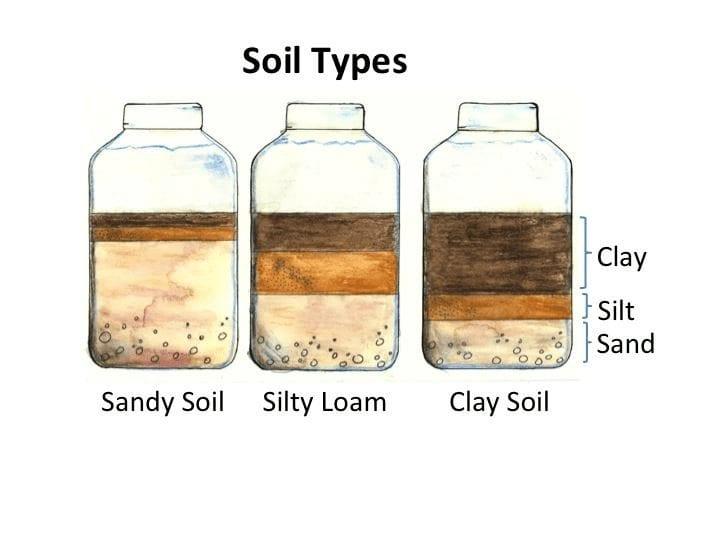
One way to determine the inorganic material in your soil is to perform a jar test. Put some of your soil in a glass jar, add water, shake, and watch what it does. If your soil composition is mostly sandy or silty loam, you will need to remove some material and add compost and bagged soil. If you have clay soil, you’ll need to add undefined that will aerate your garden beds. Furthermore, if the water immediately drains to the bottom you probably don’t have enough aggregate in your soil to slowly drain the water. This implies that the roots won’t have enough stabilization to maintain themselves.
Minerals
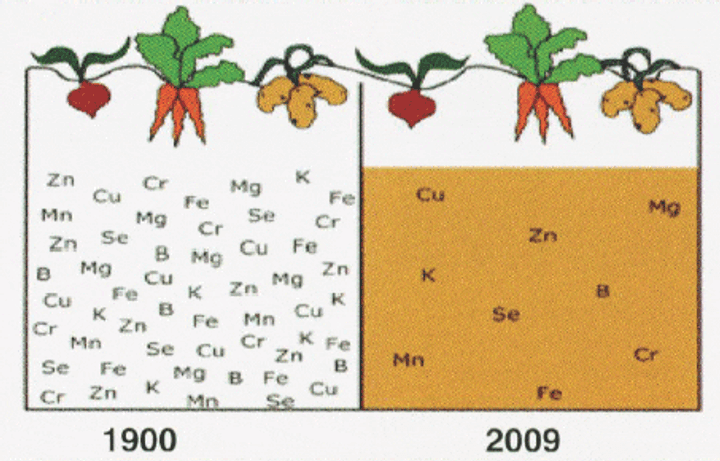
Apart from inorganic materials, there are 17 elements that plants need available in the composition of the soil for nutrient uptake. While Nitrogen, Phosphorus, and Potassium are the main nutrients, there are also things such as Calcium, Iron, Magnesium, and a host of other nutrients that your plants can’t do without.
Organic Matter
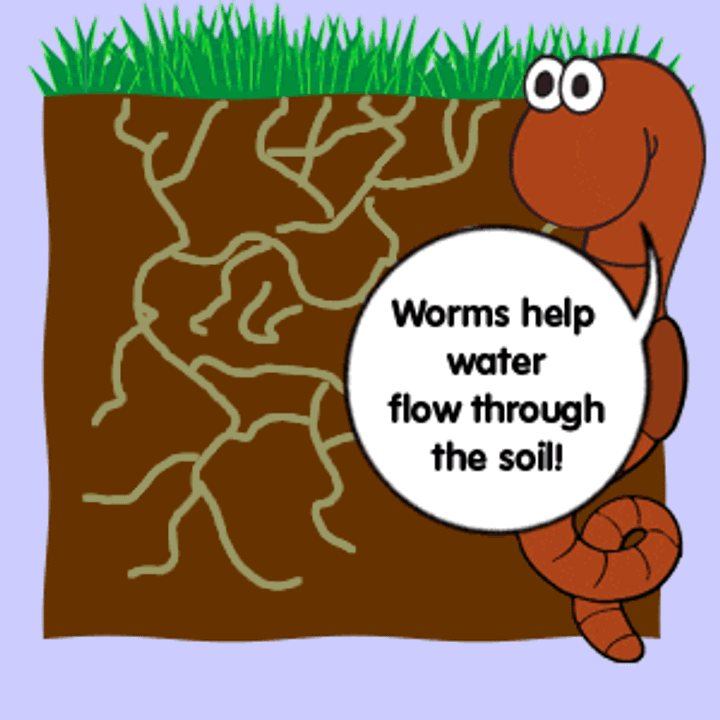
Soil is alive! Well, most of it anyway. Apart from decomposing plant matter and roots, there are all kinds of little creatures that live in your soil composition to help it thrive. They live in symbiosis with the plants, in that they give a little and take a little from each other. Earthworms, nematodes, bacteria, and fungi are just a few examples of what can be found in your soil. Earthworms specifically improve the soil structure by making little pockets for air and water to hang out, and deposit their “droppings” in the soil. Encourage worms to stay in your soil by keeping it moist and never using pesticides.
Please contact us if you’d like to get more information on Growing Domes. Or to receive more informative gardening and Growing Dome articles, please sign up for our monthly Newsletter “The Happy Grower”.
Share This
Desiree is a biodynamic gardener, content developer, artist, and embodiment coach. With a degree in Resiliency Leadership and Environmental Education, she’s had the opportunity to study intensively under many thought-leaders in the fields of Agroforestry, Women’s Embodiment, Astrology, Life-Coaching, and Biodynamic Beekeeping. When she’s not tending the gardens at Growing Spaces, she can be found rock climbing, highlining, and soaking in the hot springs in southwest Colorado.
Subscribe to Our Newsletter
Join our community to stay up to date

Featured Categories
Downloads

Please Subscribe to Our Newsletter! :-)
Please Join our community to stay up to date :-)